The area known as King's Cross today was named in the 1830's when a 60ft high monument with an eleven-foot high statue of King George IV on top was located at the crossroads, hence the name King's Cross, of Gray's Inn Road, Pentonville Road and New Road and was eventually demolished in 1845. Although the monument was gone, the name King's Cross remained and the railway station was opened in 1852, and stands at the junction where the monument once stood. This was followed by St Pancras Railway Station in 1868. Just to the north of the two adjacent passenger railway stations, the land was used for industrial purposes, gasworks and by the railways for goods traffic coming into London. With the decline of railway goods traffic after the end of the Second World War, the area drifted into an abandoned industrial site and was notorious in the 1980's as King's Cross became associated with prostitution and drug abuse. In the 1990's, the King's Cross partnership was established by the Government to fund regeneration projects which now includes offices, restaurants, bar's, shop's, public spaces and residential areas.
German Gymnasium: Now a cafe and restaurant, the German Gymnasium was funded by the German community living in London and completed in 1865. The National Olympian Association held the first Olympic Games for indoor events in the building in 1866 and it continued annually until 1908 when it was moved to White City.
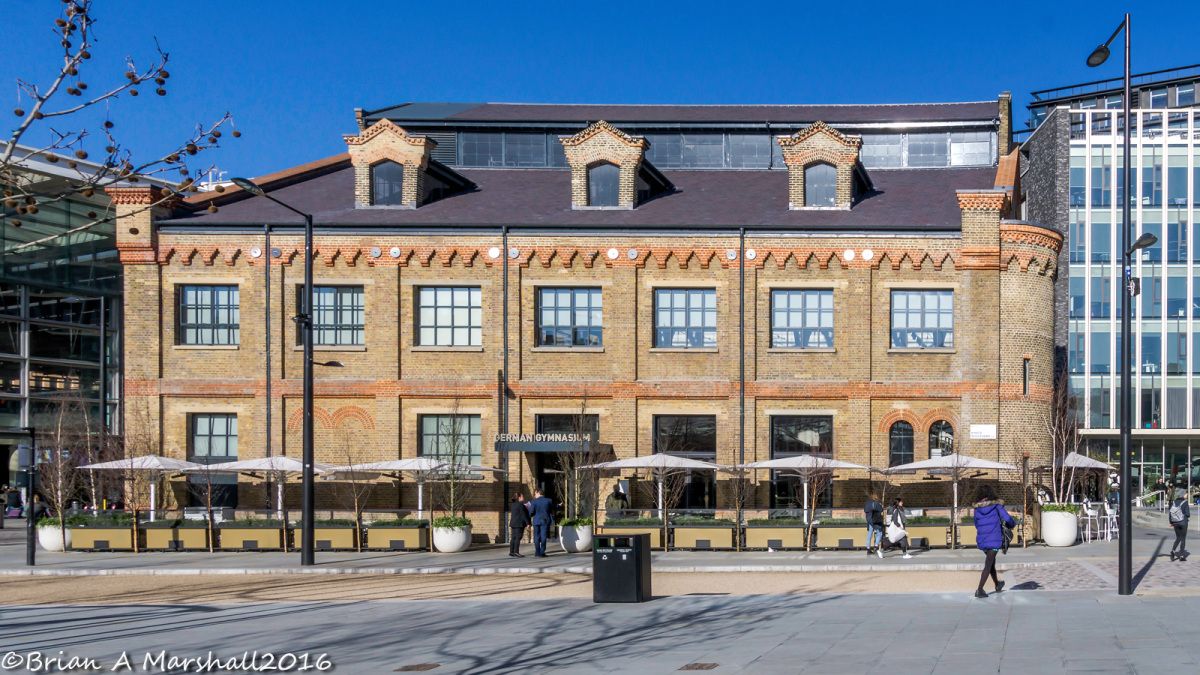
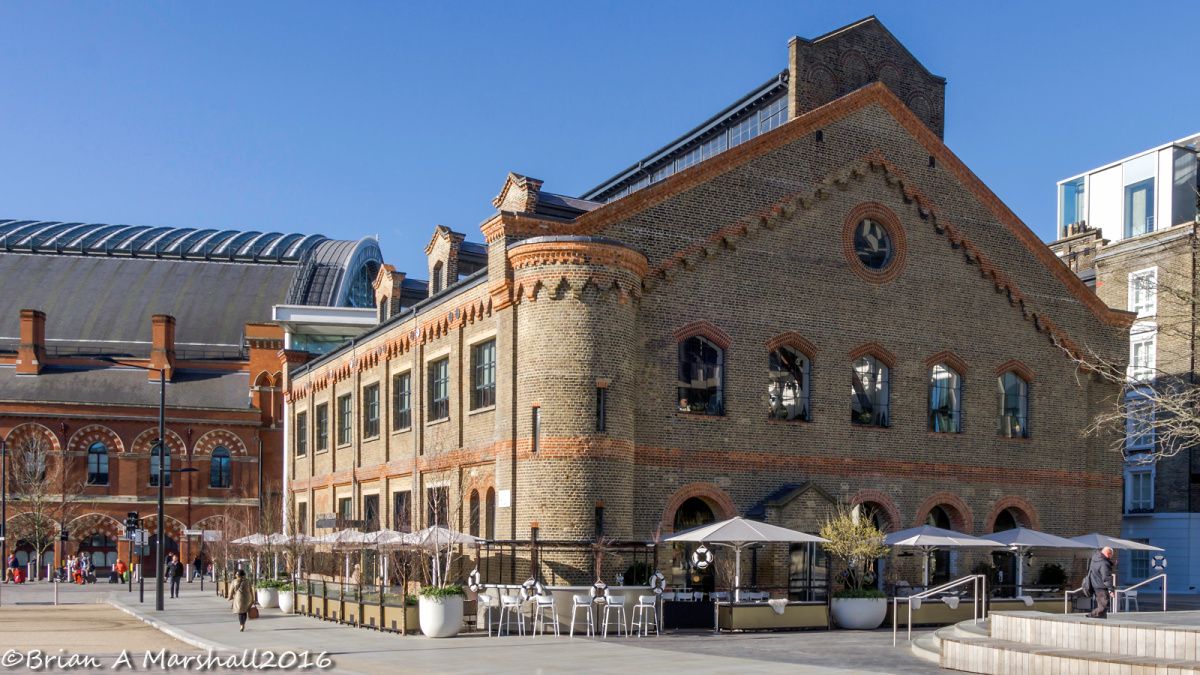
Granary Building: Part of the King's Cross Goods Complex Yard designed by Lewis Cubitt and completed in 1852, the Granary Building was used to store Lincolnshire wheat for London baker's. It is now the home of Central Saint Martins arts college. At the front of the building is a water feature with fountains which display throughout the day and at night are enhanced by multi coloured lights.
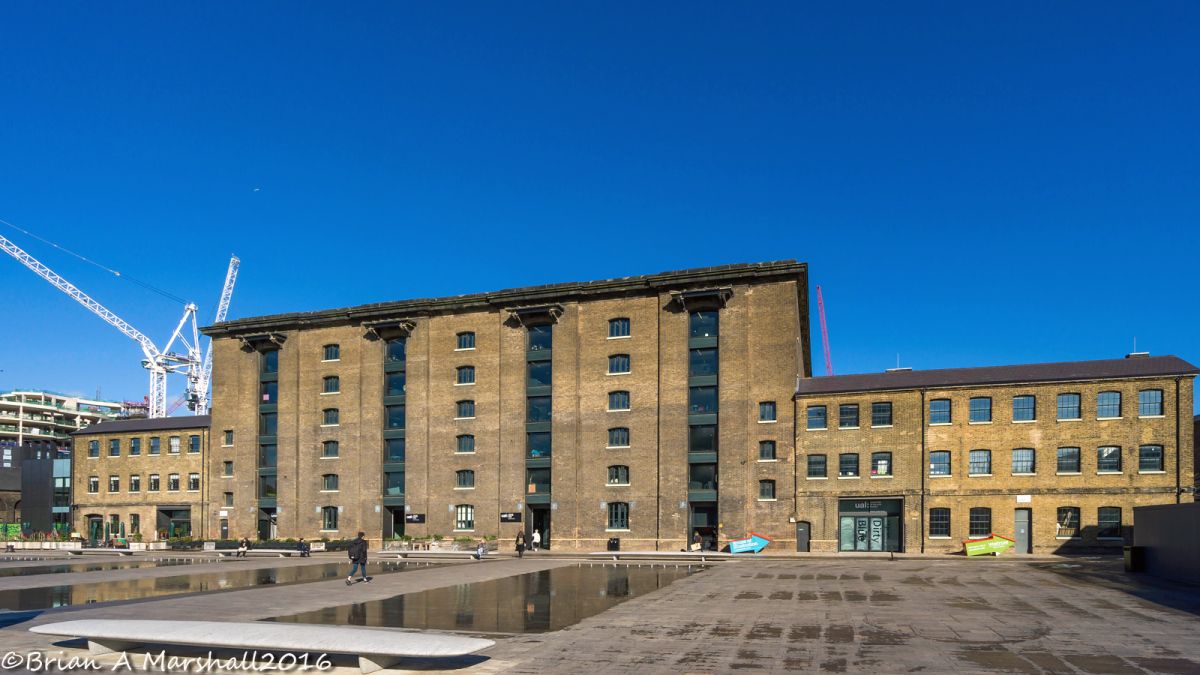
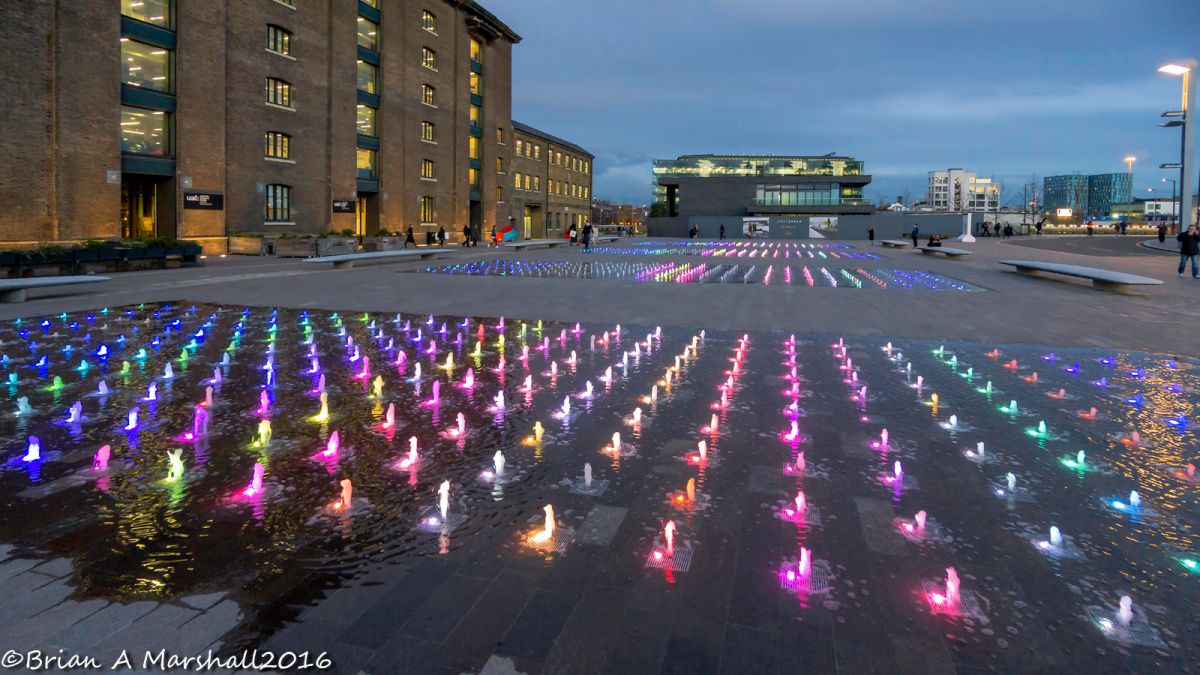

Granary Building ~ House of Illustration (Originally built as offices for the King’s Cross Goods Yard) ~ Offices for the Midlands Goods Shed behind with Regents Canal below.
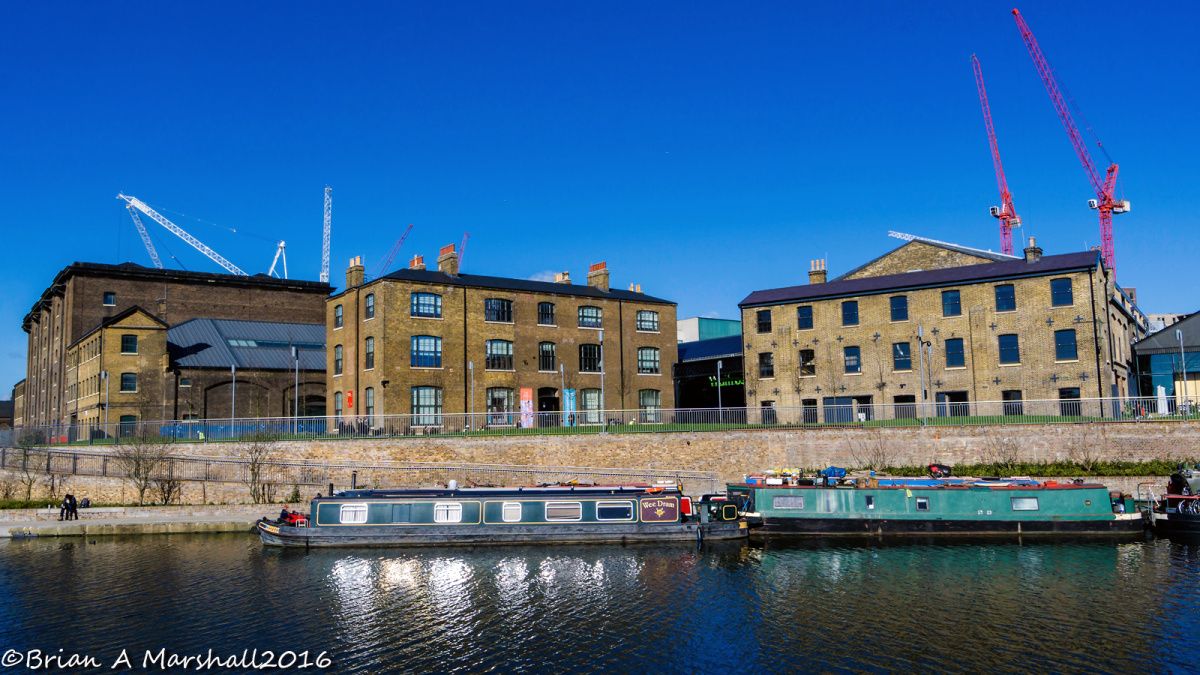
Midland Goods Shed: Built as a carriage shed in 1850, it was a temporary passenger terminal while King's Cross Station was being built. The East Handyside Canopy was added in 1888 to provide cover to wagons unloading potatoes with the potato market at the eastern end.

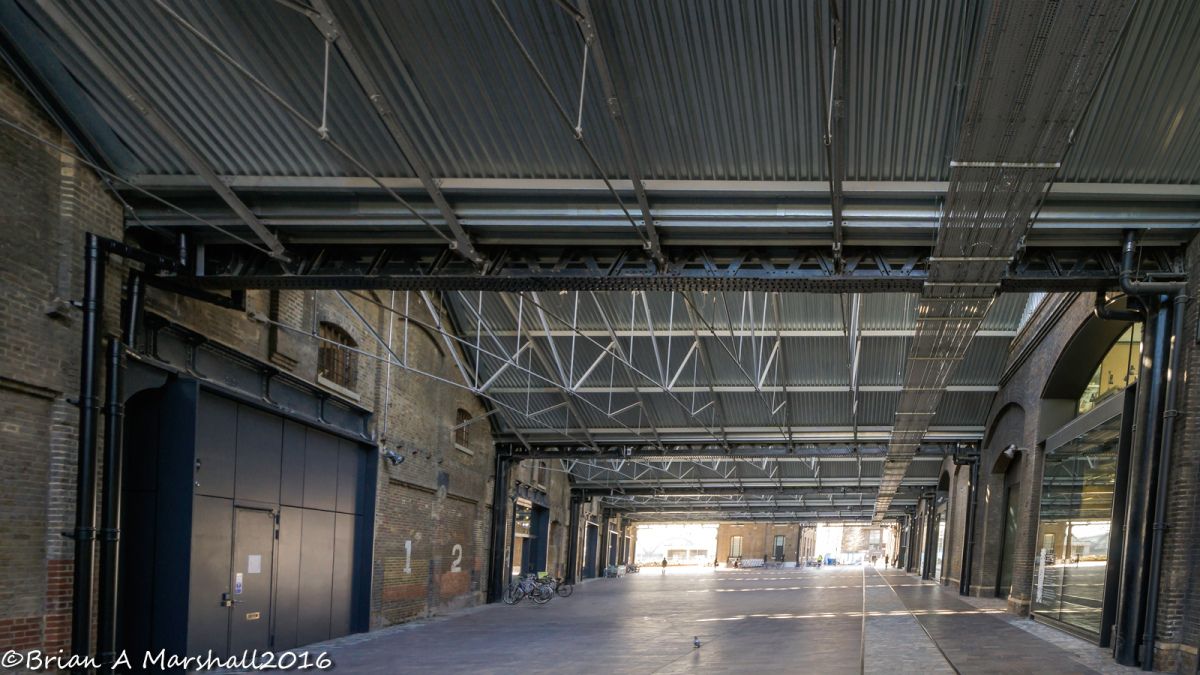
Next to the Western Transit Shed is Lewis Cubitt Square which also has a water feature which lights up after dusk.
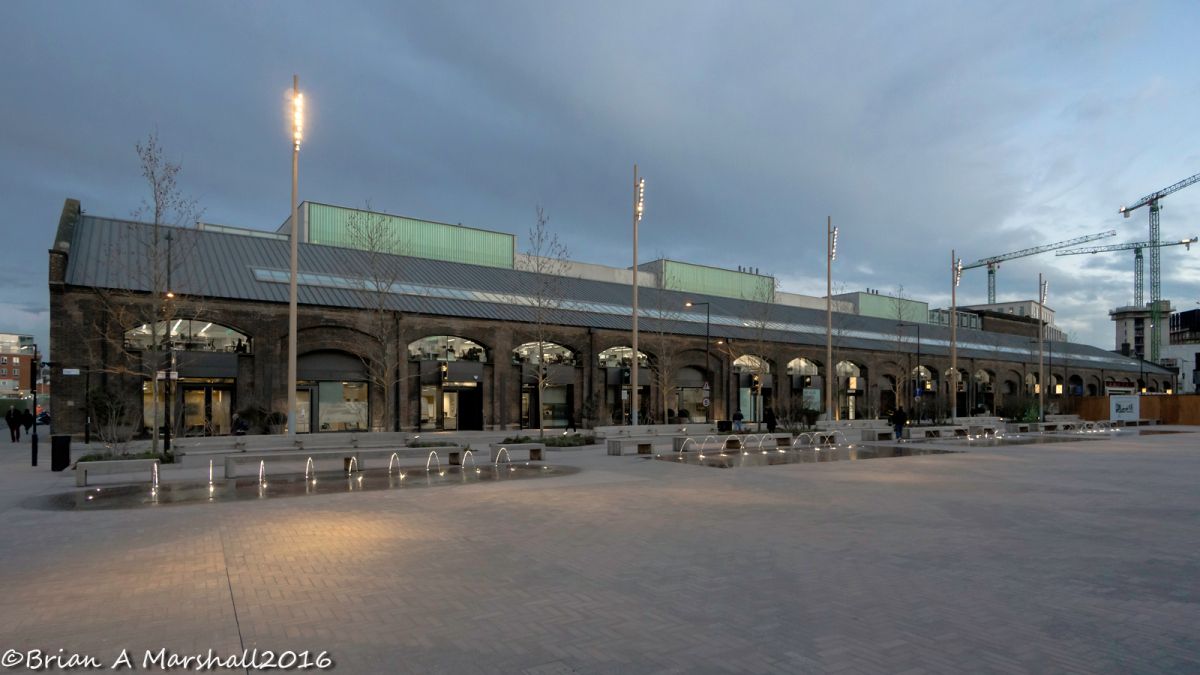
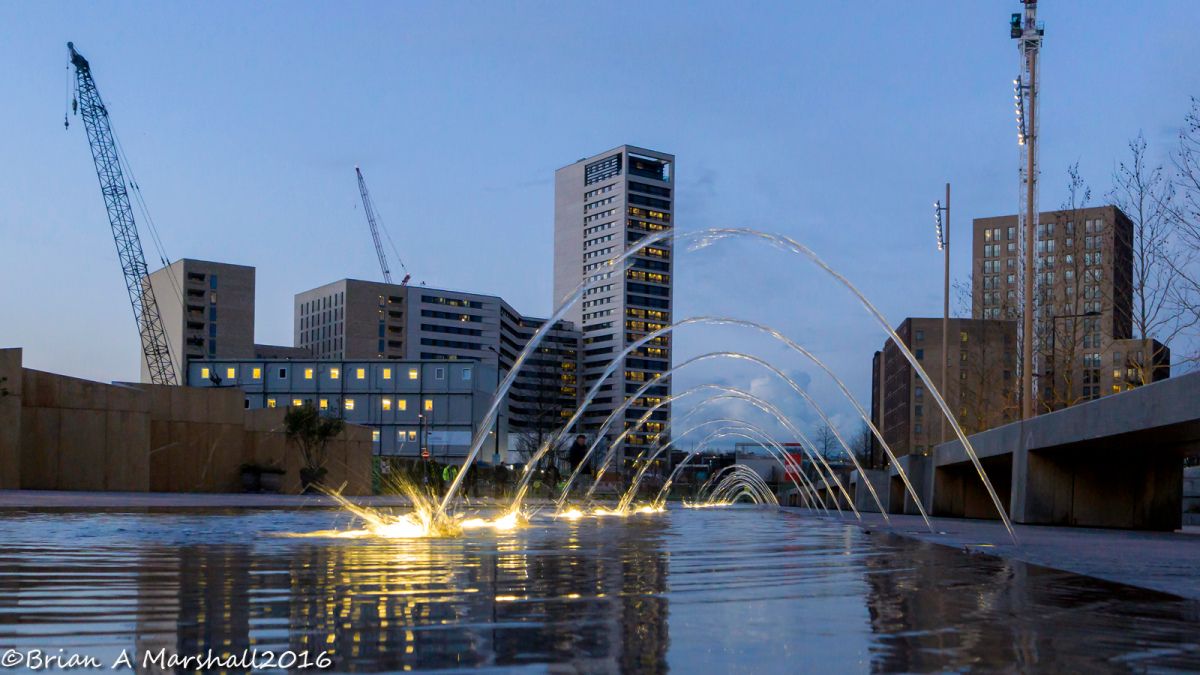
Gasholder Park: Gasholders once dominated the King's Cross skyline and Gasholder No.8, along with three others, were taken down and the cast iron support structure was restored and re-erected next to the St Pancras Lock on Regents Canal. Inside is a circular lawn and a covered walkway and seating area with a reflective canopy and supports. Circular apartment buildings are being erected next to it which will have the cast iron gasholder structure re-erected around them.
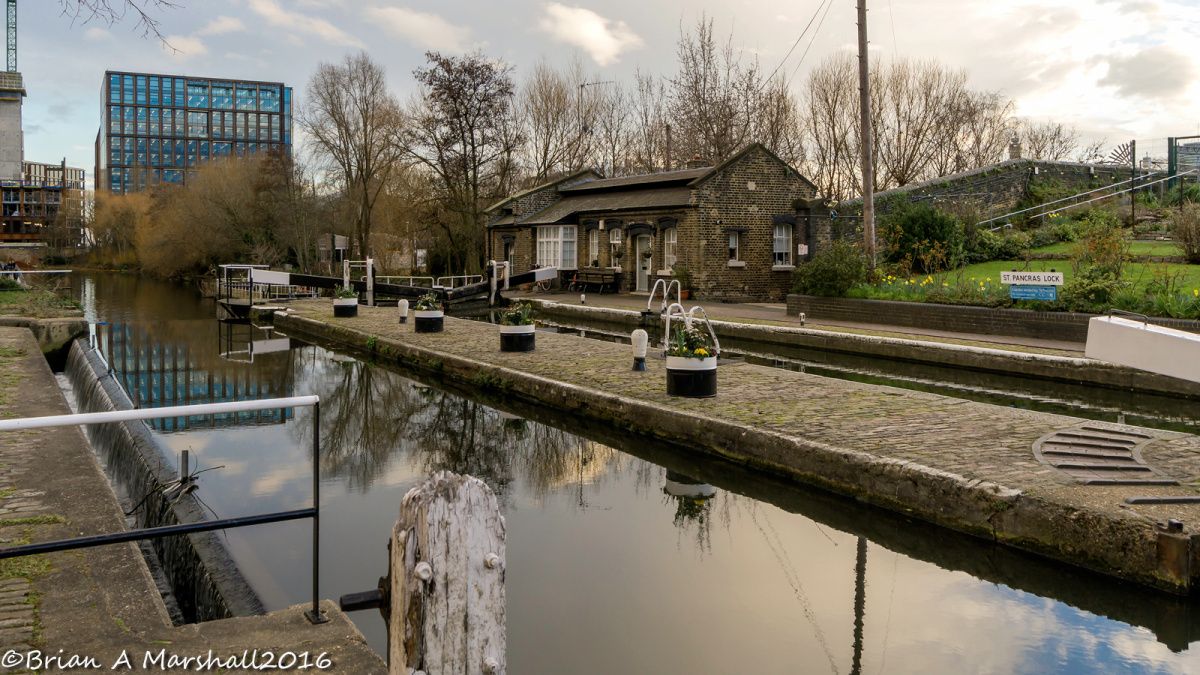
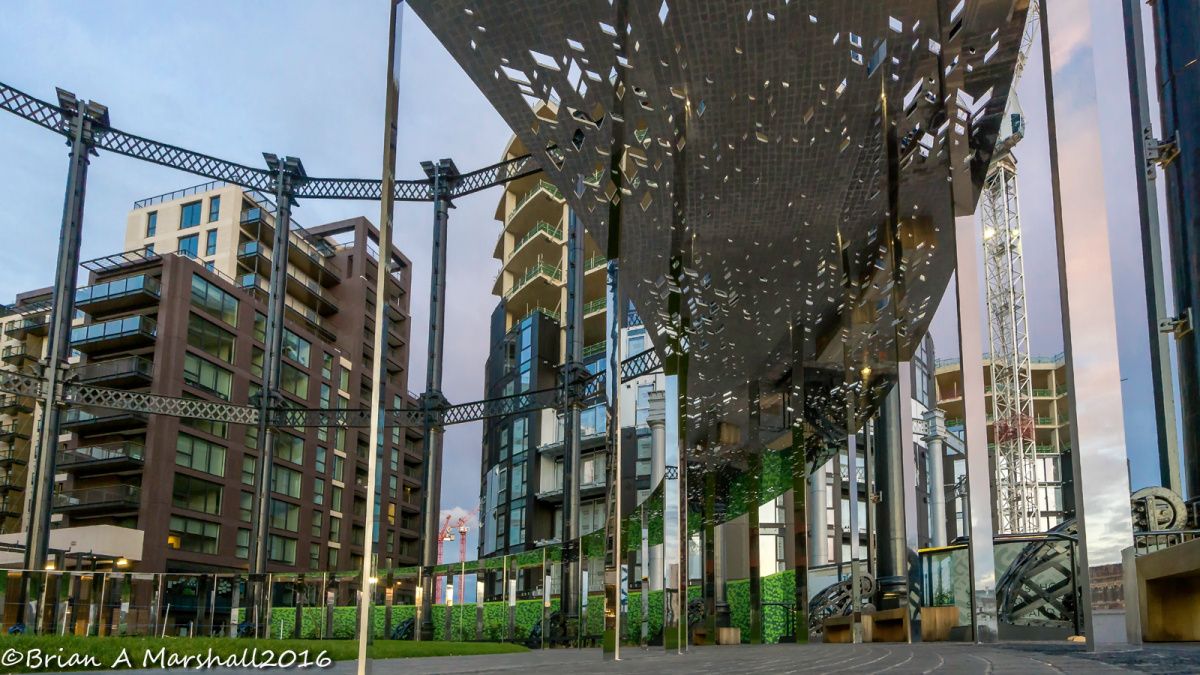
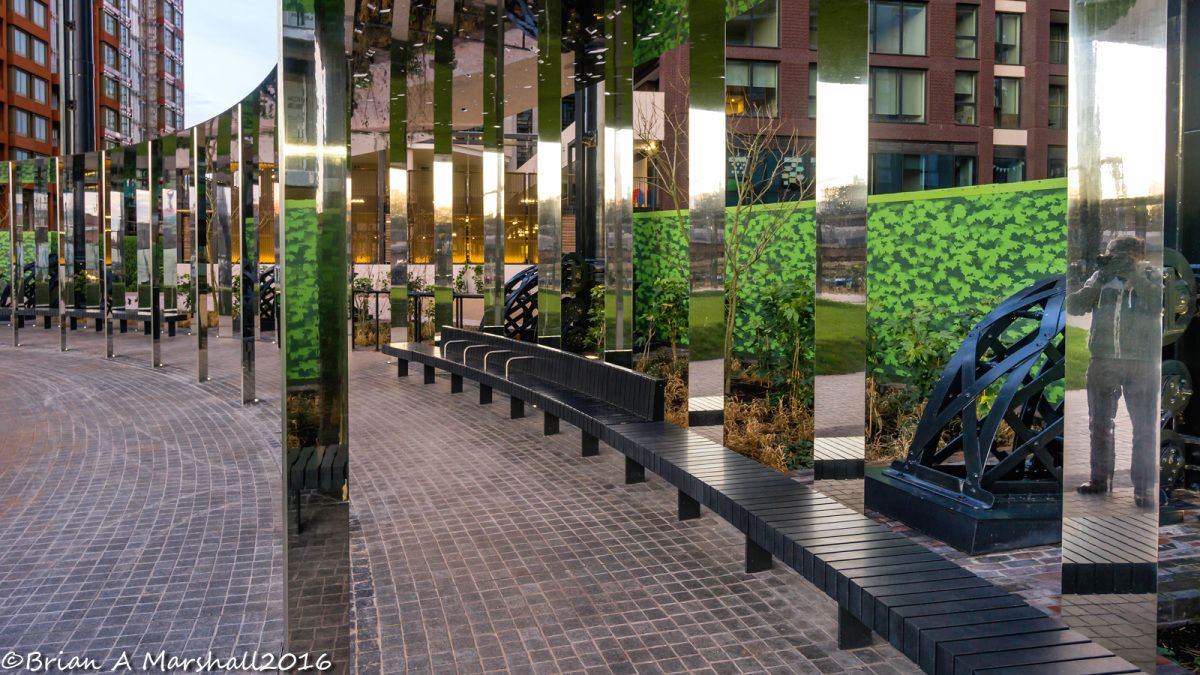
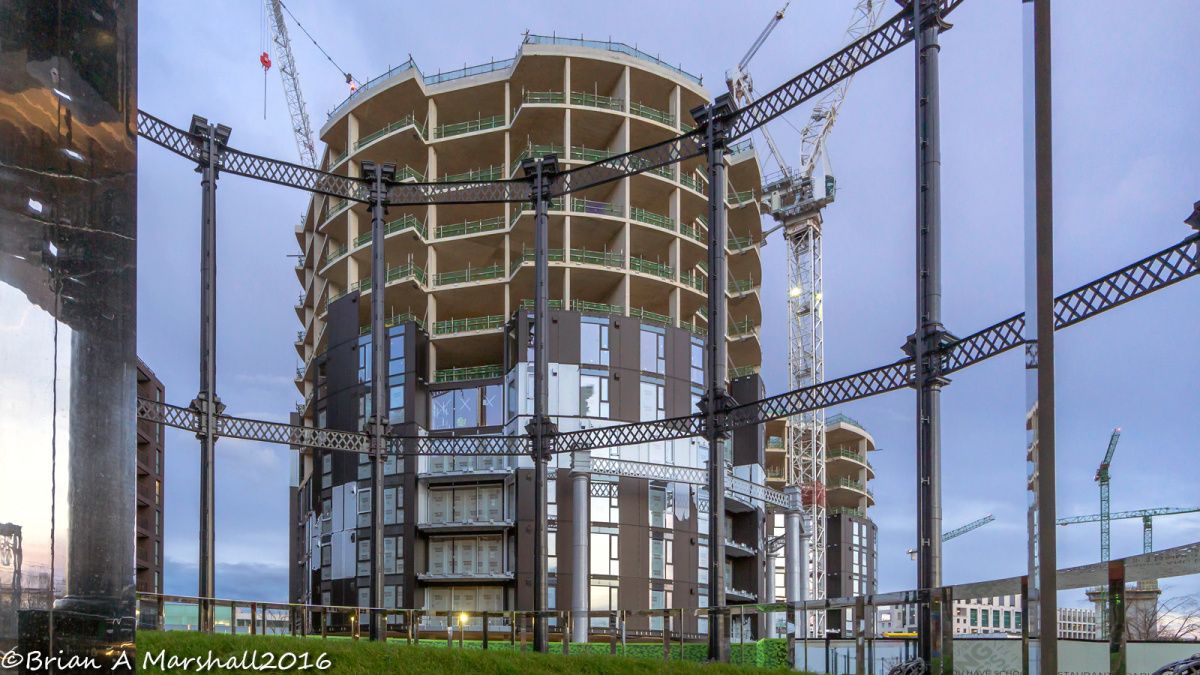
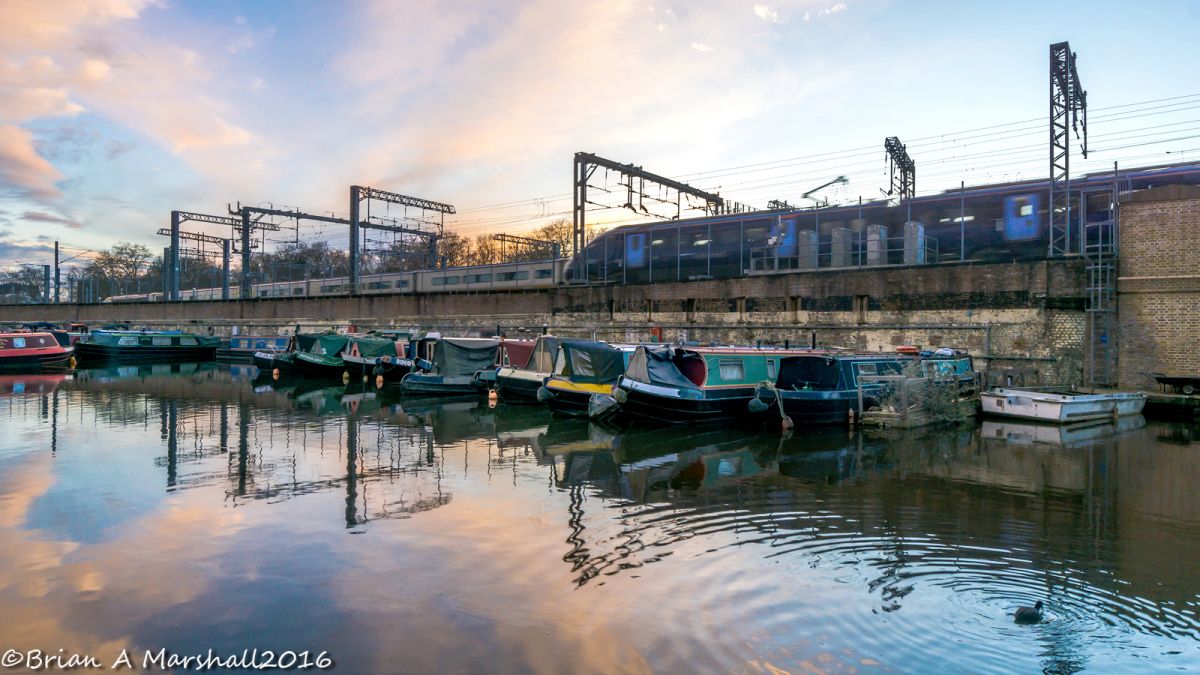
There are two viewing/observation platforms. One just up from the station before you get to Granary Square and the other at the top end of the site looking down over the open air swimming pool, with its built in reed garden to re-cycle and clean the water, and over Lewis Cubitt Park.

Despite a lot of building work going on which should last at least another 5 years apparently, the area is very clean and well maintained by King's Cross personnel, easily spotted by their black coats and bright red woolly hats, who when not cleaning were patrolling all over the place.
Sony Alpha A6000 Compact Systems Camera + Sony E10-18mm f4 OSS Lens & Tamron 18-200mm f3.5-6.3 Di-III VC Lens/RAW/Manual Settings..
Brian
